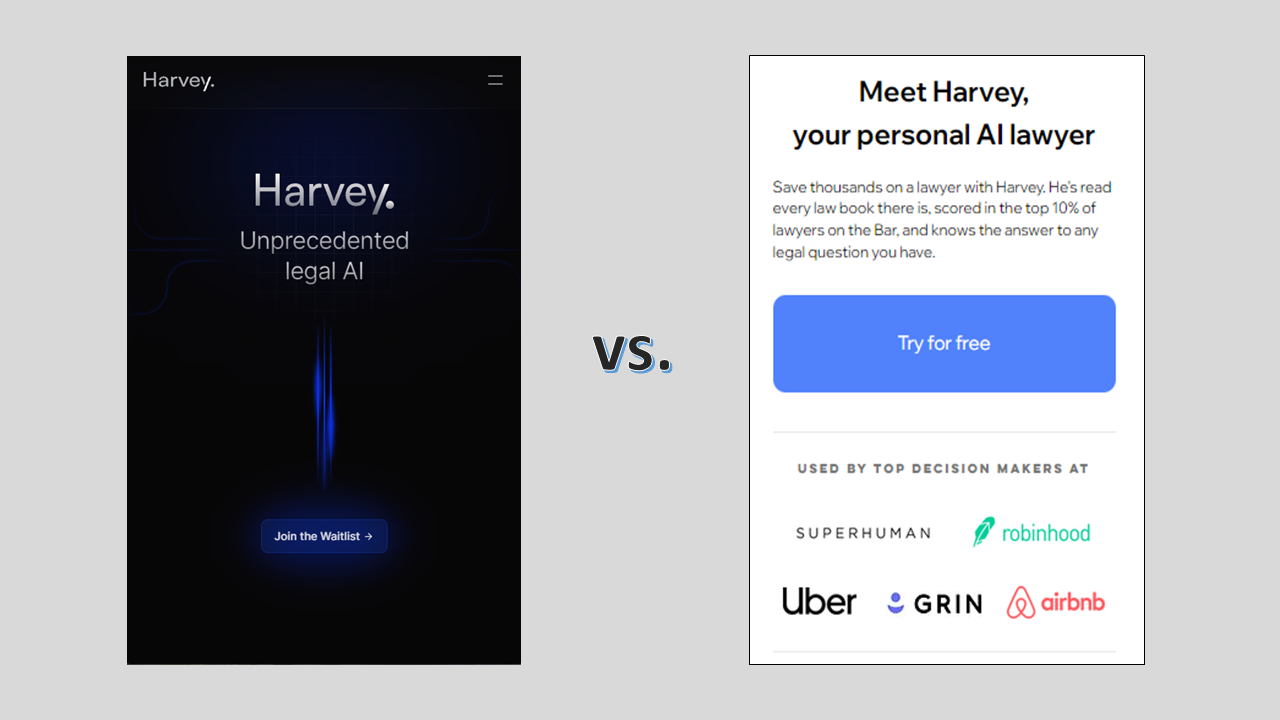
Harvey Assistant: Complete Buyer's Guide
Practical efficiency gains for everyday legal work
Harvey Assistant positions itself as a specialized AI legal assistant designed specifically for mid-market law firms and corporate legal departments seeking practical automation for routine legal tasks [49]. The platform leverages natural language processing capabilities tailored for legal terminology to enhance document review, contract drafting, and legal research workflows [49].
Market Position & Maturity
Market Standing
Harvey Assistant operates in the competitive mid-market legal AI segment, positioning itself between basic AI tools and enterprise-grade platforms like Lexis+ AI and specialized solutions like Kira Systems [49].
Company Maturity
Company maturity indicators remain limited in available research, with specific details about funding status, revenue growth, and operational scale requiring direct vendor inquiry [49].
Growth Trajectory
Market trajectory appears aligned with growing demand for practical legal AI solutions that deliver immediate value without extensive implementation complexity [49].
Industry Recognition
Industry recognition and third-party validation details are not extensively documented in available research, indicating potential buyers should seek independent references and case studies during evaluation processes [49].
Strategic Partnerships
The vendor's strategic partnerships and ecosystem positioning require direct assessment for long-term viability planning [49].
Longevity Assessment
Stability assessment suggests the platform maintains general operational reliability, though users report occasional downtime during peak usage periods [49].
Proof of Capabilities
Customer Evidence
Harvey Assistant's customer evidence centers on vendor-provided case studies demonstrating practical applications in mid-sized law firms and corporate legal departments [49].
Quantified Outcomes
A mid-sized law firm implementation reportedly achieved 60% reduction in document review time, while a corporate legal department experienced 50% review time reduction with 30% efficiency increase in contract review processes [49].
Case Study Analysis
Implementation success patterns indicate positive outcomes for routine legal tasks, with customers reporting satisfaction with the tool's impact on efficiency and workload reduction for basic applications [49].
Market Validation
Market validation indicators include customer retention and adoption patterns, though specific metrics regarding customer growth, retention rates, and competitive wins require direct vendor inquiry [49].
AI Technology
Harvey Assistant's AI foundation centers on natural language processing capabilities specifically optimized for legal terminology and document structures, differentiating it from general-purpose AI tools that may struggle with legal language nuances [49].
Architecture
The system architecture emphasizes integration capabilities with existing legal software, allowing firms to incorporate AI assistance into established workflows without requiring complete system overhauls [49].
Primary Competitors
Harvey Assistant competes in the mid-market legal AI segment against established players including Lexis+ AI, Thomson Reuters CoCounsel, and specialized tools like Kira Systems [49].
Competitive Advantages
Primary competitive advantages include ease of implementation and practical focus on routine legal tasks rather than attempting comprehensive legal analysis automation [49].
Market Positioning
Market positioning emphasizes practical automation for everyday legal work rather than advanced AI capabilities or enterprise-grade features [49].
Win/Loss Scenarios
Win scenarios favor Harvey Assistant when buyers prioritize ease of use, cost-effectiveness, and straightforward implementation over advanced features or sophisticated legal analysis capabilities [49]. Loss scenarios occur when organizations require extensive customization, enterprise-grade security, or handling of complex legal scenarios [49].
Key Features

Pros & Cons
Use Cases
Featured In Articles
Comprehensive analysis of AI Virtual Legal Assistants for Legal/Law Firm AI Tools for Legal/Law Firm AI Tools professionals. Expert evaluation of features, pricing, and implementation.
How We Researched This Guide
About This Guide: This comprehensive analysis is based on extensive competitive intelligence and real-world implementation data from leading AI vendors. StayModern updates this guide quarterly to reflect market developments and vendor performance changes.
40+ verified sources per analysis including official documentation, customer reviews, analyst reports, and industry publications.
- • Vendor documentation & whitepapers
- • Customer testimonials & case studies
- • Third-party analyst assessments
- • Industry benchmarking reports
Standardized assessment framework across 8 key dimensions for objective comparison.
- • Technology capabilities & architecture
- • Market position & customer evidence
- • Implementation experience & support
- • Pricing value & competitive position
Research is refreshed every 90 days to capture market changes and new vendor capabilities.
- • New product releases & features
- • Market positioning changes
- • Customer feedback integration
- • Competitive landscape shifts
Every claim is source-linked with direct citations to original materials for verification.
- • Clickable citation links
- • Original source attribution
- • Date stamps for currency
- • Quality score validation
Analysis follows systematic research protocols with consistent evaluation frameworks.
- • Standardized assessment criteria
- • Multi-source verification process
- • Consistent evaluation methodology
- • Quality assurance protocols
Buyer-focused analysis with transparent methodology and factual accuracy commitment.
- • Objective comparative analysis
- • Transparent research methodology
- • Factual accuracy commitment
- • Continuous quality improvement
Quality Commitment: If you find any inaccuracies in our analysis on this page, please contact us at research@staymodern.ai. We're committed to maintaining the highest standards of research integrity and will investigate and correct any issues promptly.